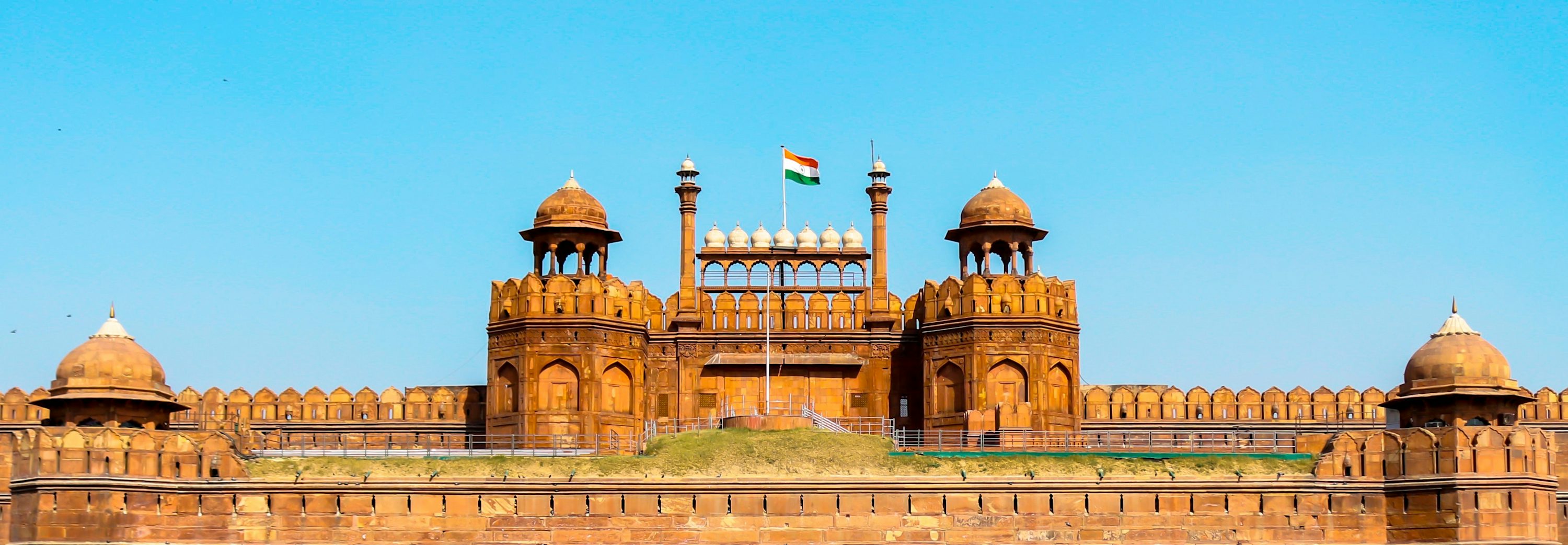
The Red Fort, located in the heart of Delhi, is one of India’s most iconic monuments and a UNESCO World Heritage Site. Built by the Mughal Emperor Shah Jahan in 1648, the fort served as the main residence of the Mughal emperors for nearly 200 years. Its massive red sandstone walls, stretching over 2 kilometers, give the fort its name and grand appearance.
Architecturally, the Red Fort is a stunning example of Mughal design, blending Persian, Timurid, and Indian styles. Inside, you’ll find impressive structures such as the Diwan-i-Aam (Hall of Public Audience), Diwan-i-Khas (Hall of Private Audience), Rang Mahal, and beautifully landscaped gardens. Each corner of the fort whispers tales of imperial grandeur and historical events.
Apart from its historical importance, the fort holds immense cultural significance. Every year on India’s Independence Day, the Prime Minister hoists the national flag here, followed by an inspiring speech, making it a focal point of national pride.
Best time to visit: October to March
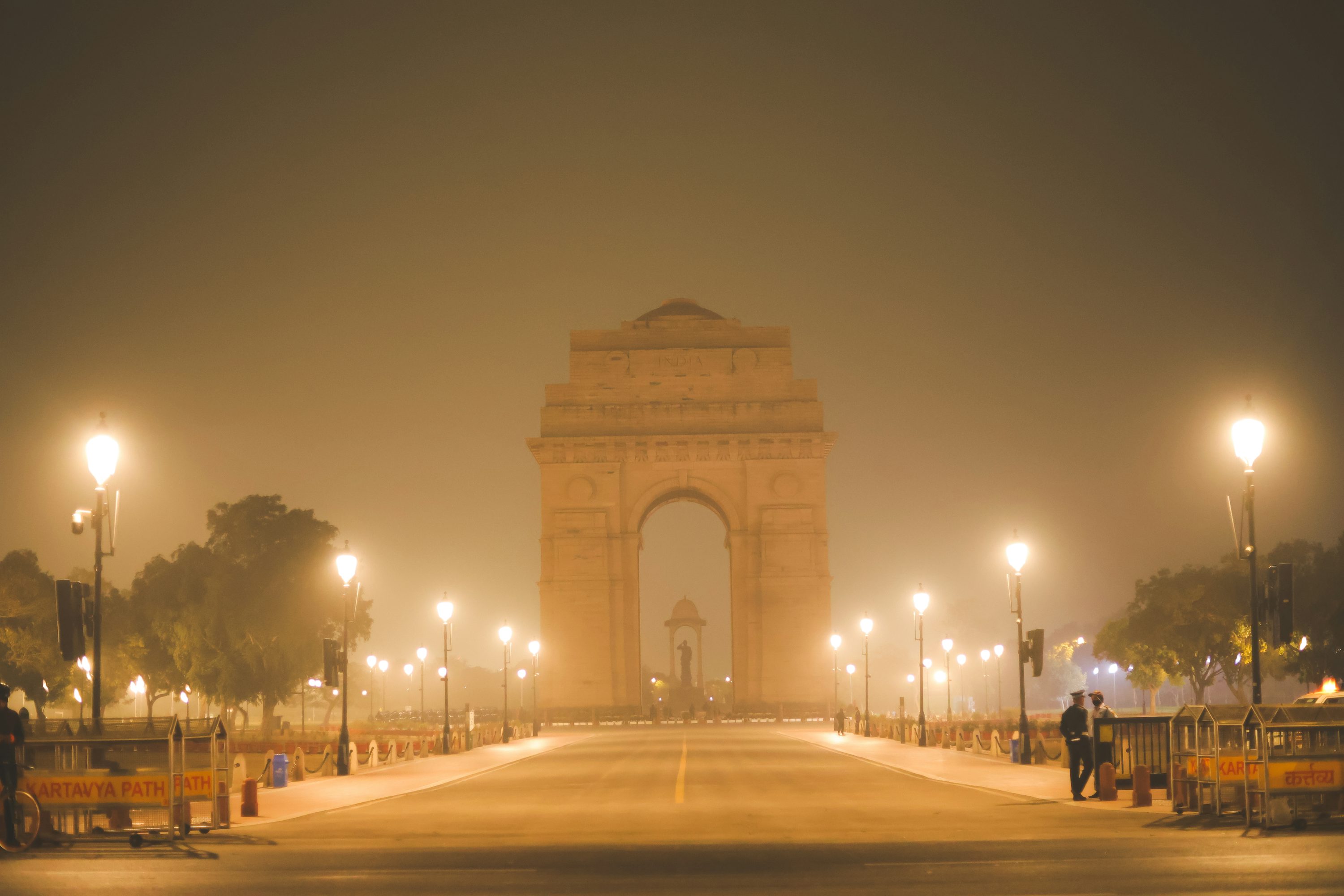
India Gate, located in the heart of New Delhi, is one of the country’s most significant war memorials. Designed by Sir Edwin Lutyens and inaugurated in 1931, it stands as a tribute to over 70,000 Indian soldiers who lost their lives during World War I and in other conflicts. The grand archway, built in red and pale sandstone, is reminiscent of the Arc de Triomphe in Paris and carries the names of more than 13,000 soldiers inscribed on its surface.
Surrounded by lush green lawns, India Gate is a popular spot for both tourists and locals, especially during the evenings when the monument is beautifully illuminated. Families, couples, and friends often gather here to enjoy the peaceful ambiance and open spaces. The sight of the national flag fluttering nearby fills the heart with patriotic pride.
Beneath the archway lies the Amar Jawan Jyoti, an eternal flame that burns in memory of the soldiers who sacrificed their lives in the Indo-Pak war of 1971. This solemn site is guarded round the clock and serves as a poignant reminder of India’s bravery and resilience.
The area around India Gate is also vibrant, with street vendors selling local snacks, ice cream, and souvenirs, making it a lively yet respectful place to visit. Night strolls here, with the monument glowing in the backdrop, are especially enchanting.
Best time to visit: November–March

Qutub Minar, located in Delhi’s Mehrauli area, is a UNESCO World Heritage Site and one of India’s most iconic monuments. Standing tall at 73 meters, it is the tallest brick minaret in the world and a fine example of Indo-Islamic architecture. Commissioned in 1192 by Qutb-ud-din Aibak and later completed by his successors, the tower is made of red sandstone and marble, adorned with intricate carvings and verses from the Quran.
Surrounding the minaret is the Qutub Complex, which houses several historical structures, including the Quwwat-ul-Islam Mosque, Alai Darwaza, and the famous Iron Pillar of Delhi that has resisted rust for over 1,600 years. The complex reflects the architectural brilliance of the Delhi Sultanate and offers visitors a fascinating journey into India’s medieval past.
The minar’s five distinct storeys, separated by balconies with intricate stone railings, display varying architectural styles, showcasing the contributions of different rulers. Though entry to the top is now restricted, standing at the base and looking up at the towering structure is awe-inspiring.
Qutub Minar is also a popular cultural hub, hosting the annual Qutub Festival where classical music and dance performances take place under the night sky, making it a magical experience for history and culture lovers alike.
Best time to visit: October–March
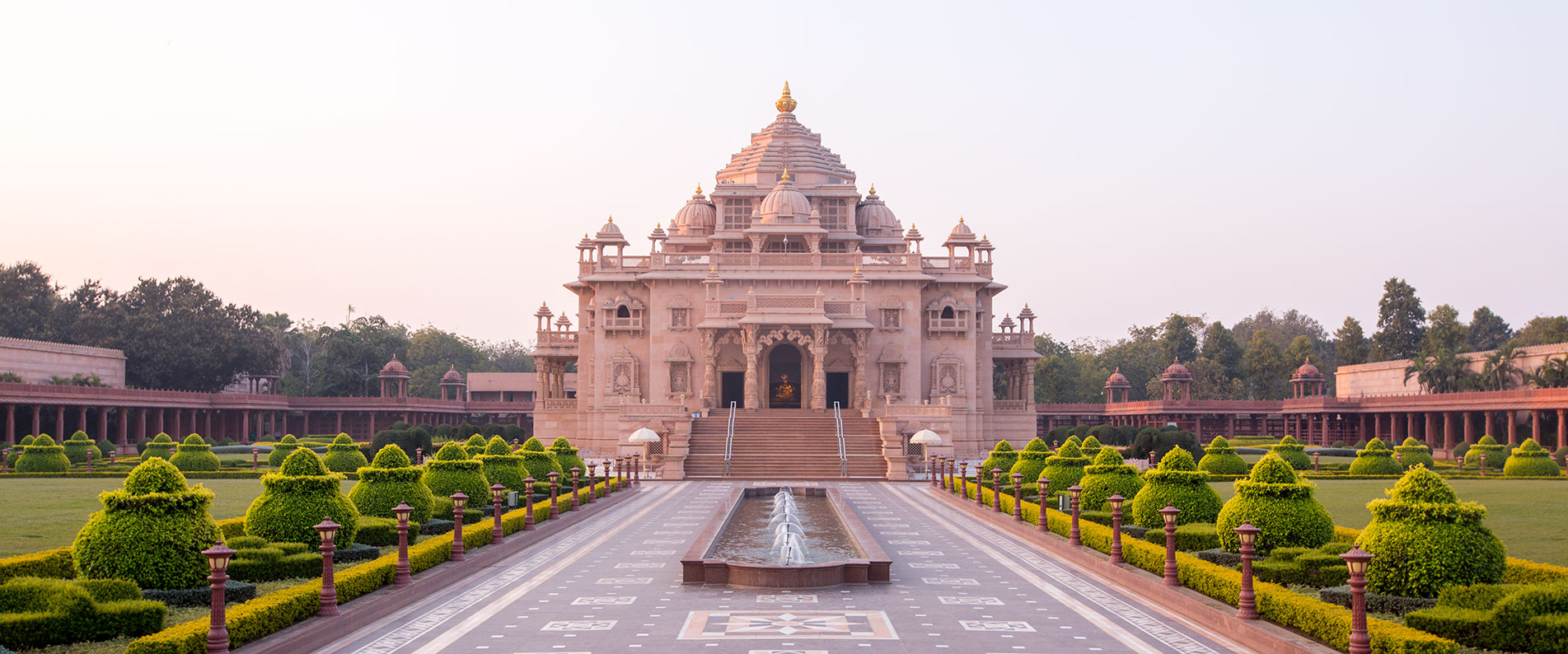
Akshardham Temple in Delhi is a breathtaking blend of spirituality, culture, and architectural brilliance. Opened in 2005, this grand temple complex is dedicated to Bhagwan Swaminarayan and showcases the timeless traditions of Indian art, architecture, and spirituality. Built using pink sandstone and white marble, the temple is adorned with intricate carvings of deities, floral motifs, and scenes from Indian epics.
The central monument stands without the use of steel, symbolizing harmony with nature, and houses a majestic idol of Swaminarayan along with other revered deities. The temple complex also features the Sahaj Anand Water Show, Yagnapurush Kund (the world’s largest stepwell), the Cultural Boat Ride depicting India’s history, and the stunning Garden of India with bronze sculptures of great figures from Indian history.
Akshardham is not just a place of worship but also a cultural learning center, offering insights into India’s ancient heritage through exhibitions and multimedia presentations. The evening musical fountain show, set against the illuminated temple, is an unmissable spectacle that blends light, water, and sound into a spiritual narrative.
Best time to visit: October–March,
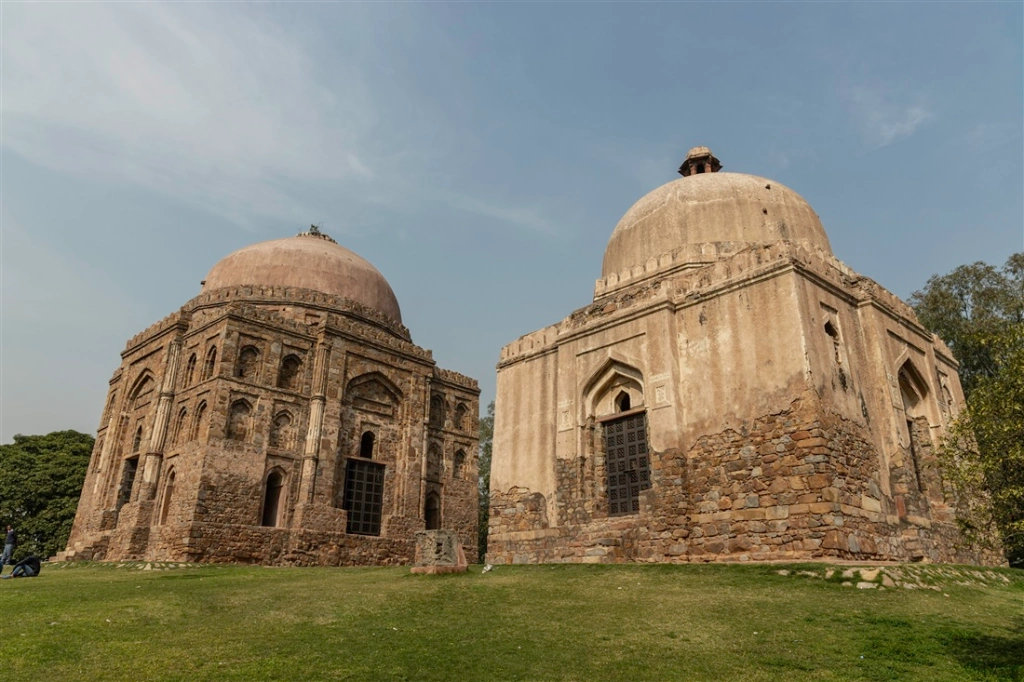
Hauz Khas, located in South Delhi, beautifully blends medieval history with modern-day vibrance. The name “Hauz Khas” translates to “Royal Tank,” referring to the large water reservoir built in the 14th century by Alauddin Khilji to supply water to Siri Fort. The area is home to the historic Hauz Khas Complex, which includes ancient madrassas, domed tombs, and pavilions from the Delhi Sultanate era, set around the scenic lake.
The Hauz Khas Village, adjacent to the complex, has transformed into a trendy urban hub, bustling with cafes, boutiques, art galleries, and restaurants. Visitors can enjoy a leisurely stroll along the lake, explore the ruins of the ancient structures, and soak in the artistic atmosphere that attracts both locals and tourists.
Walking through the Hauz Khas Complex feels like stepping back in time, with its centuries-old stone walls, lush greenery, and tranquil water body. The lake is particularly peaceful, offering a beautiful contrast to the bustling streets just outside. Photographers and history lovers often flock here to capture the charm of Indo-Islamic architecture.
Beyond its historical core, Hauz Khas Village has transformed into one of Delhi’s trendiest hangouts. It’s filled with quirky cafés, designer boutiques, art galleries, and vibrant nightlife spots. The mix of ancient ruins and contemporary culture makes it a unique urban escape where past and present coexist effortlessly.
Best time to visit: October–March
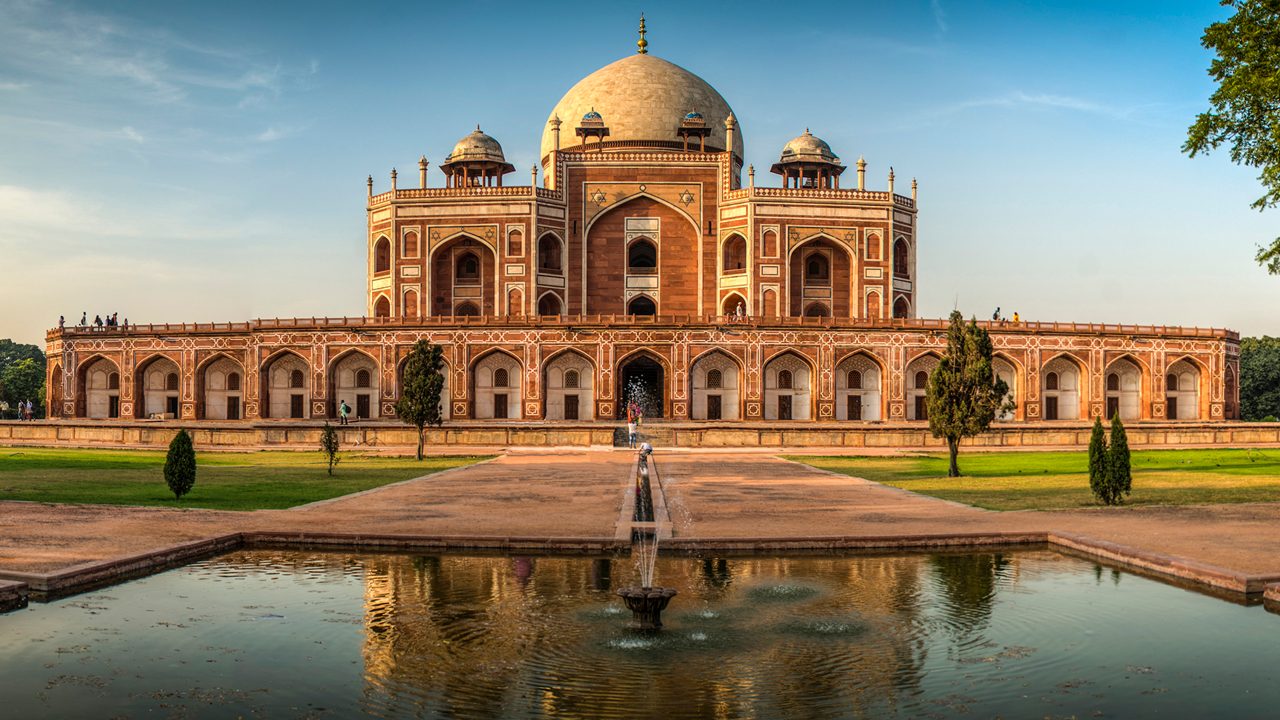
Humayun’s Tomb, located in Nizamuddin, Delhi, is one of the finest examples of Mughal architecture and a UNESCO World Heritage Site. Built in 1570 by Empress Bega Begum in memory of her husband, Emperor Humayun, it was the first garden tomb on the Indian subcontinent. The monument’s design, with its symmetrical layout and Persian-inspired double dome, later influenced the architecture of the Taj Mahal.
The tomb is surrounded by the Charbagh-style gardens, divided into four parts by water channels, symbolizing the Islamic concept of paradise. The red sandstone structure, inlaid with white marble, stands majestically at the center, and the intricate lattice work on its windows adds to its beauty. The entire complex also houses the graves of various Mughal royals.
Walking through Humayun’s Tomb offers a peaceful and immersive experience, where history, art, and nature converge. The sight of the grand dome against a blue sky, with green gardens and flowing water channels, creates a picture-perfect setting for photography and relaxation.
Its historical importance, architectural brilliance, and serene surroundings make Humayun’s Tomb a must-visit for anyone exploring Delhi’s heritage.
Best time to visit: October–March
 Temple DL.webp)
The Bahá’í House of Worship, famously known as the Lotus Temple, is one of Delhi’s most iconic architectural marvels. Shaped like a blooming lotus, this white marble structure was completed in 1986 and is dedicated to the Bahá’í faith, which promotes unity and equality among all religions. Its lotus-inspired design symbolizes purity and peace, making it a place where people from all walks of life can come to meditate and reflect.
The temple is surrounded by nine serene pools and lush green gardens, enhancing its tranquil ambiance. Unlike traditional places of worship, the Lotus Temple does not have idols or rituals; instead, it welcomes silent prayer and meditation, allowing visitors to connect with their inner selves in a peaceful environment.
Inside, the massive prayer hall can accommodate over 2,500 people at once. The structure’s open design, combined with natural lighting through the petal-shaped openings, creates a calming and spiritual atmosphere. The absence of any religious symbols makes it a truly universal place of worship.
Its serene surroundings, remarkable architecture, and message of unity make the Lotus Temple not just a religious monument but also a global symbol of harmony.
Best time to visit: October–March
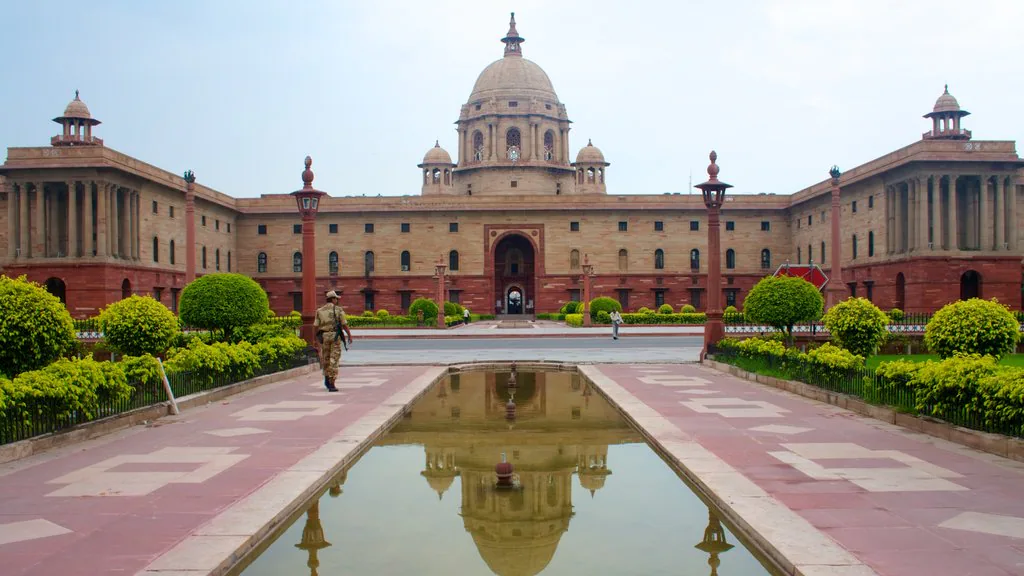
Rashtrapati Bhavan, located at the western end of Rajpath in New Delhi, is the official residence of the President of India and one of the largest and most impressive presidential estates in the world. Designed by Sir Edwin Lutyens, this grand building was completed in 1929 and seamlessly blends Western classical architecture with Indian motifs. Spread over 330 acres, it includes the main building, expansive gardens, staff quarters, stables, and offices.
The main building has 340 rooms distributed over four floors, featuring an elegant central dome, wide corridors, and intricately designed halls like the Durbar Hall and Ashoka Hall. The architecture combines sandstone and marble with Mughal and European styles, giving it a unique identity. It stands as a symbol of India’s democracy and heritage.
One of the highlights of Rashtrapati Bhavan is the Mughal Gardens, which are open to the public during the annual "Udyan Utsav." These gardens showcase a variety of flowers, fountains, and landscaped lawns, making them a delight for nature lovers and photographers. G
Best time to visit: October–March
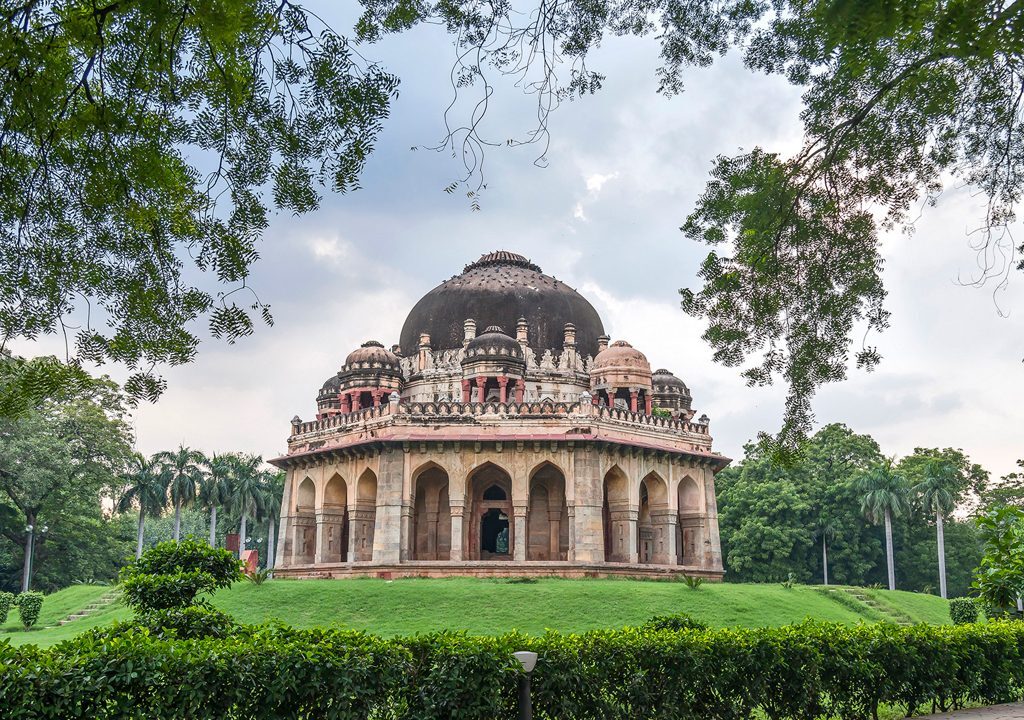
Lodhi Gardens, located in the heart of New Delhi, is a serene 90-acre park that beautifully combines lush greenery with historical monuments from the 15th and 16th centuries. It serves as a peaceful escape from the city’s hustle and bustle while offering a glimpse into the architectural legacy of the Lodhi Dynasty. The gardens house several significant structures, including the Tomb of Sikandar Lodi, Shisha Gumbad, and Bara Gumbad, each showcasing Indo-Islamic architecture.
The park is a favorite spot for morning walkers, joggers, yoga enthusiasts, and families looking for a tranquil retreat. Its well-maintained pathways, expansive lawns, and shaded areas create a refreshing environment for relaxation or light exercise. Photographers and history buffs are equally drawn here for the perfect combination of natural beauty and historic charm.
Besides its historical appeal, Lodhi Gardens is home to diverse flora, including vibrant seasonal flowers, old trees, and ornamental plants. The blend of heritage structures with blooming gardens creates a picturesque setting, especially during the cooler months.
Visiting Lodhi Gardens offers an opportunity to experience Delhi’s cultural history in a peaceful, open-air setting, making it ideal for both leisure and learning.
Best time to visit: October–March

Agrasen ki Baoli, located on Hailey Road in the heart of Delhi, is a historic stepwell that exudes an aura of mystery and charm. Believed to have been originally built during the time of the legendary king Agrasen and later rebuilt in the 14th century by the Agrawal community, this architectural marvel is 60 meters long and 15 meters wide. Its unique design features 108 stone steps leading down to the water level, with arched niches along the walls that add to its ancient beauty.
While the stepwell once served as a crucial water reservoir for the city, it is now a protected monument under the Archaeological Survey of India and a favorite spot for tourists, photographers, and history lovers. The deep silence within its walls contrasts sharply with the bustling streets of Delhi above, offering a peaceful yet intriguing experience.
Agrasen ki Baoli is also surrounded by myths and paranormal tales. Some locals believe that the well was once filled with “black water” that had a hypnotic effect, luring people to drown in it. Although these stories are part of folklore, they add an element of mystery, making the place even more fascinating.
Best time to visit: October–March
